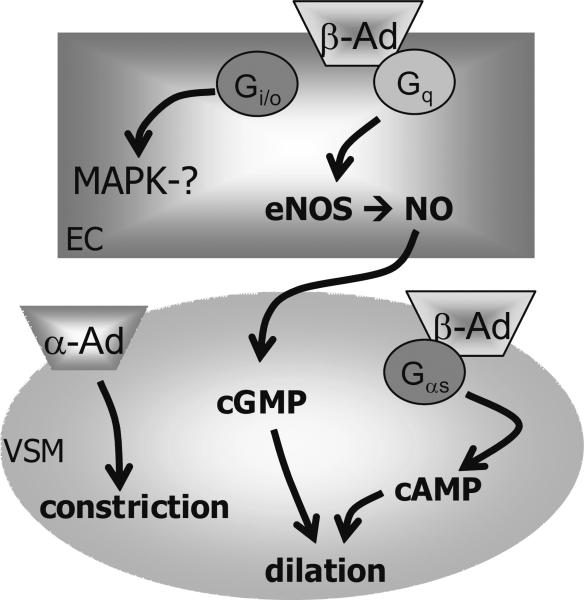Figure 6.
Schematic of hypothesized mechanism of vasoaction for purified curcumin I in the peripheral microcirculation for terminal (nutritive) arterioles or arcade arterioles that feed them. EC, endothelial cell; VSM, vascular smooth muscle cell; β-AD, beta adrenoceptor (EC or VSM dilation); α-AD, alpha adrenoceptor (VSM constriction). Curcumin induces vasoconstriction that requires α-AD, and vasodilation that requires β-AD. EC dependent dilation occurs through eNOS (endothelial nitric oxide synthase), NO (nitric oxide), and cGMP (cyclic guanosine monophosphate) accounts for most of the dilation; we hypothesize that this is linked to the receptor G-protein subunit, Gq and independent of Gi or MAPK (mitogen activating protein kinase) activity. VSM dependent dilation occurs through cAMP (cyclic adenosine monophosphate) accounts for a smaller portion of the dilation, significant in only the arcade arterioles; based on the data presented here, we hypothesize that this is linked to the G-protein subunit, Gαs.

